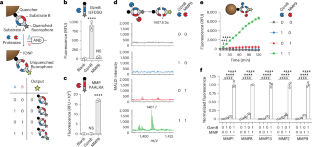2025-01-20 ミシガン大学
<関連情報>
- https://news.umich.edu/unprecedented-level-of-control-allows-person-without-use-of-limbs-to-operate-virtual-quadcopter/
- https://www.nature.com/articles/s41591-024-03341-8
脳とコンピュータの高性能インターフェイスにより、麻痺のある人の指のデコードとクアッドコプターのゲーム制御を実現 A high-performance brain–computer interface for finger decoding and quadcopter game control in an individual with paralysis
Matthew S. Willsey,Nishal P. Shah,Donald T. Avansino,Nick V. Hahn,Ryan M. Jamiolkowski,Foram B. Kamdar,Leigh R. Hochberg,Francis R. Willett & Jaimie M. Henderson
Nature Medicine Published:20 January 2025
DOI:https://doi.org/10.1038/s41591-024-03341-8

Abstract
People with paralysis express unmet needs for peer support, leisure activities and sporting activities. Many within the general population rely on social media and massively multiplayer video games to address these needs. We developed a high-performance, finger-based brain–computer-interface system allowing continuous control of three independent finger groups, of which the thumb can be controlled in two dimensions, yielding a total of four degrees of freedom. The system was tested in a human research participant with tetraplegia due to spinal cord injury over sequential trials requiring fingers to reach and hold on targets, with an average acquisition rate of 76 targets per minute and completion time of 1.58 ± 0.06 seconds—comparing favorably to prior animal studies despite a twofold increase in the decoded degrees of freedom. More importantly, finger positions were then used to control a virtual quadcopter—the number-one restorative priority for the participant—using a brain-to-finger-to-computer interface to allow dexterous navigation around fixed- and random-ringed obstacle courses. The participant expressed or demonstrated a sense of enablement, recreation and social connectedness that addresses many of the unmet needs of people with paralysis.


